Look up! Winter's best meteor shower peaks tonight
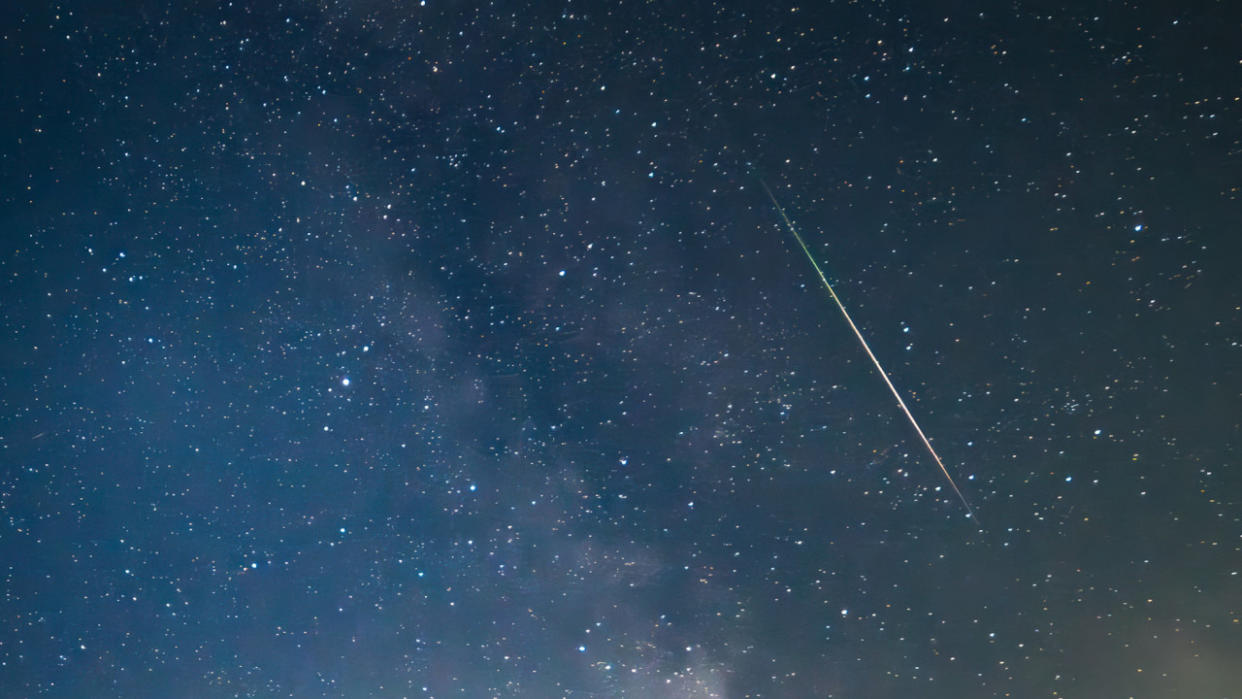
Eyes to the sky Wednesday night into Thursday morning for the annual peak of the Quadrantid meteor shower!
At the start of every calendar year, just as Earth is passing through perihelion — its closest point to the Sun — the planet also sweeps through a stream of ice and dust left behind by what could be an extinct or shattered comet.
As these 'meteoroids' of ice and dust are swept up by Earth, they plunge into the atmosphere at over 144,000 kilometres per hour. Compressing the air molecules in their path so tightly that the air glows, each meteoroid produces a brief streak of light through the sky (a 'meteor'). The overall event — which can feature over 100 meteors per hour — is known as the Quadrantid meteor shower.
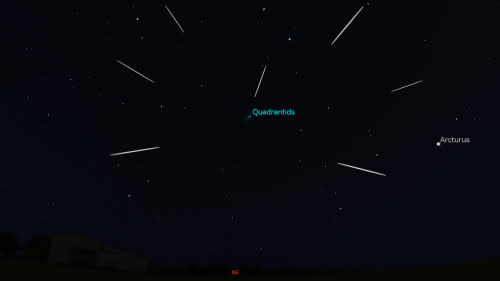
The position of the Quadrantids 'radiant' in the northern sky on Jan. 3-4, 2024. Credit: Stellarium/Scott Sutherland
Meteor showers are named based on where they appear to originate from in the sky (their 'radiant'). Most are named for the constellation closest to that point (Perseids, Orionids, Geminids). In some cases, when several different meteor showers radiate out of the same constellation at different times of the year, they are named after the specific star of that constellation they are closest to (eta Aquariids or delta Aquariids).
The constellation the Quadrantids get their name from won't be found on any modern night sky map, though. Quadrans Muralis was the name of a now-defunct constellation located in the northern sky between the constellations Ursa Major, Boötes, and Draco. With the meteor shower first discovered in the 1820s and Quadrans Muralis demoted into obscurity in 1922, there was plenty of time for the name to stick.
The Quadrantids are active from December 28 to January 12 each year. Activity is relatively sparse at the start and finish. However, it can be pretty exceptional during the shower's relatively short peak on the night of January 3-4. For roughly six hours that night, the Quadrantids have been known to produce up to 120 meteors per hour. That makes it one of the strongest meteor showers of the year!
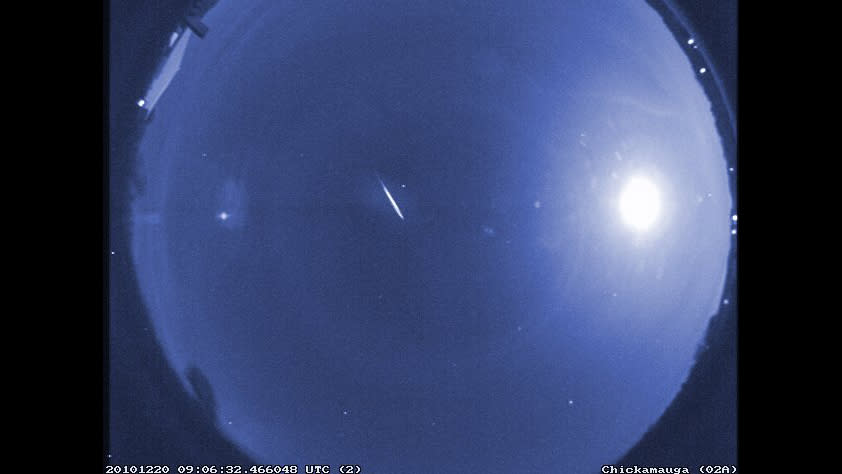
This false-colour image of a rare early Quadrantid was captured by a NASA meteor camera in 2010. Credit: NASA/Meteoroid Environment Office/Bill Cooke
Given the human eye's limitations for spotting these brief flashes of light, the average viewer tends to see around 50 Quadrantid meteors per hour during the night of the peak. That is under ideal conditions of a clear, dark, moonless night sky.
In 2024, the Last Quarter Moon will rise just after midnight on the night of January 3-4. With this additional light source in the sky, many fainter meteors will be washed out and lost to us. Fortunately, there are enough brighter meteors from this shower, including a decent number of fireballs, that we could still catch around 25 per hour throughout the night.
Additionally, NASA says that with the Quadrantids continuing until January 12 and the Moon rising later and later each night, there will be more nights after the peak to potentially spot a Quadrantid fireball flash across the sky.
Will we see it?
Having a clear, dark sky is essential for getting the most out of a meteor shower. However, even viewing under partly cloud conditions from suburban areas can still deliver a good show from a meteor shower like the Quadrantids.
Here are the forecast cloud conditions across Canada overnight Wednesday night.
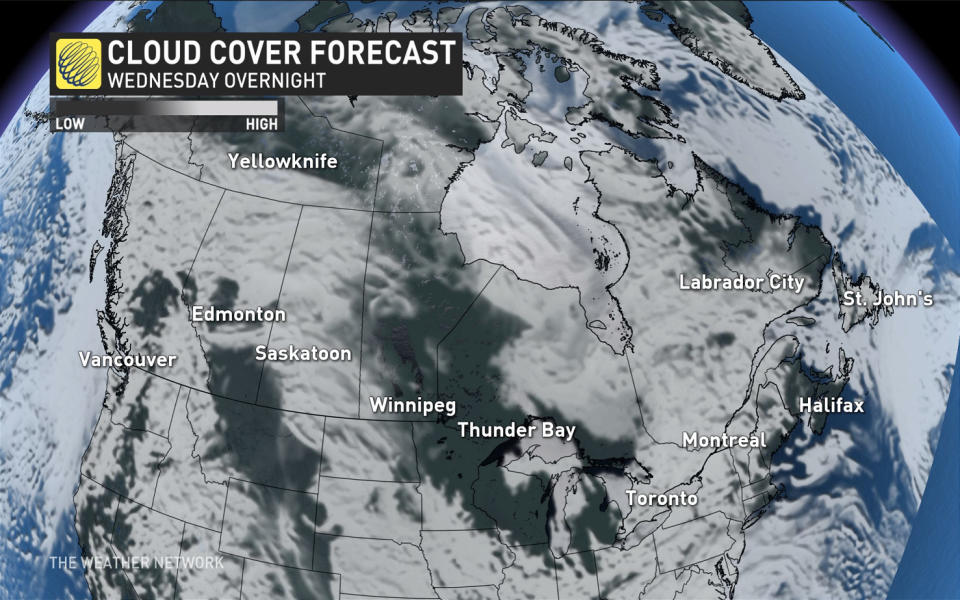
The best viewing conditions appear to be through mainland Nova Scotia, northwestern Ontario, eastern Manitoba, and southern Alberta. However, much of the cloud cover over the rest of the country looks to have clear breaks embedded within. So, it's still worth it to check out your night sky on Wednesday night.
While most meteor shower radiants rise and set along with the stars, for Canadian skywatchers, the Quadrantids remain up for the entire night. So, we only need to wait until it's sufficiently dark in the evening for meteors to show up, and the shower will continue until dawn. That gives us plenty of time throughout the night to catch a clear break in the clouds for some meteor spotting!
READ MORE: Don't forget these tips on how to get the most out of watching a meteor shower
How to watch from anywhere
Don't despair if you are caught under completely cloudy skies for the Quadrantids! There are other ways to watch this meteor shower right from the comfort of your home.
There is a 27/7 live stream from the Subaru-Asahi Star Camera, located at the Subaru Telescope atop Mauna Kea in Hawai'i, featuring views of the Quadrantid meteor shower. While the stream is ongoing, sunset on the mountain is at 5:55 p.m. Hawaii Standard Time, which equates to 10:55 p.m. EST.
Also, one of the more interesting ways to 'watch' the Quadrantids is by listening to it! The Meteor Echoes live stream presents the radar detections of meteoroids hitting the top of the atmosphere. While the radar picks up passing aircraft and satellites, which generate more extended tones, meteors sound out as brief, high-pitched chirps.
RELATED: Here are the best space and astronomy stories from 2023
Extinct or Shattered Comet?
Most meteor showers are produced by debris from icy comets. However, the Quadrantids are one of only a few known showers to originate from a rocky asteroid!
Based on observations, astronomers believe the source of the Quadrantids is likely a space rock known as 2003 EH1. This is due to the similarity of the asteroid's orbit to the shape of the debris stream that produces the meteor shower. Other 'rocky' meteor showers include the Northern Taurids in October and November, produced by asteroid 2004 TG10, and the December Geminids, which originate from 'rock comet' 3200 Phaethon.
In all these cases, astronomers speculate that each was once part of a larger cometary body that either broke apart or lost all of its ice after repeated close passes around the Sun.
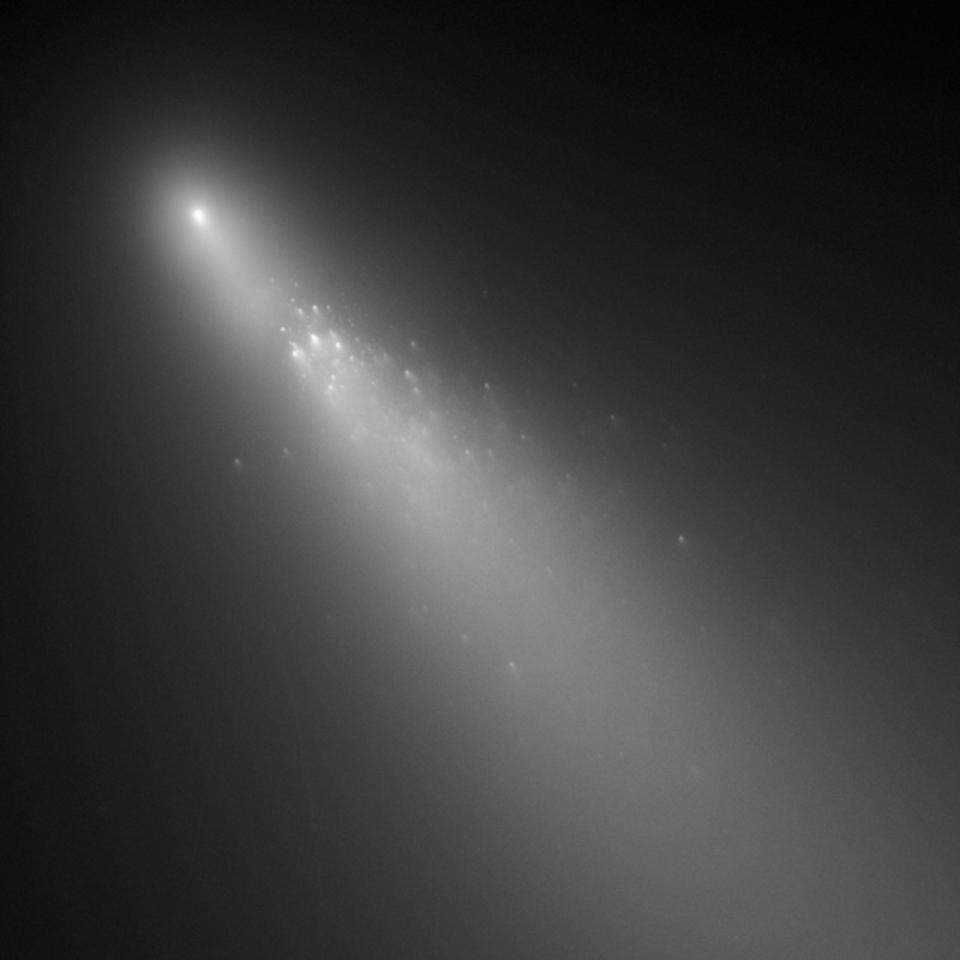
This image of the breakup of Comet 73P/Schwassmann-Wachmann 3 was captured by the Hubble Space Telescope on April 20, 2006. Credit: NASA, ESA, H. Weaver (APL/JHU), M. Mutchler and Z. Levay (STScI)
For example, 2004 TG10 may be a piece of comet 2P/Encke, which is, itself, the source of the Southern Taurid meteor shower. 3200 Phaethon is thought to be an extinct comet — one that has lost all of its ice after repeated close passes around the Sun, leaving behind just the rocky core. For 2003 EH1, it's looking like it could be an extinct comet, like 3200 Phaethon. Still, it seems astronomers haven't ruled out the possibility they may someday find a comet associated with the Quadrantids.
(Thumbnail image courtesy Nelson Liu, who captured a Perseid meteor from the Ottawa area on August 13, 2023 and uploaded it into the Weather Network's UGC Gallery.)

